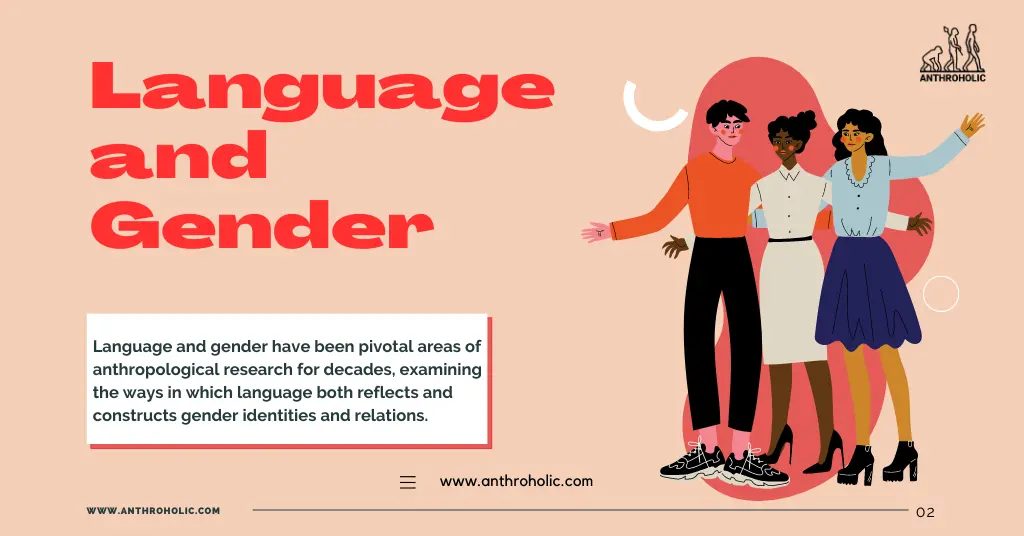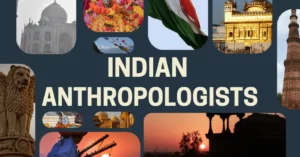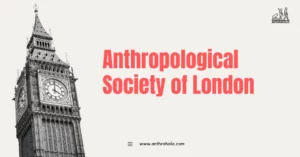AI Answer Evaluation Platform Live Now. Try Free Answer Evaluation Now
Language and Gender
Language and gender have been pivotal areas of anthropological research for decades, examining the ways in which language both reflects and constructs gender identities and relations. Scholars in the field acknowledge that our use of language is intrinsically tied to our societal, cultural, and individual perceptions of gender [1].

Language as a Reflection of Gender Roles
Language provides insights into societal structures, including the division of roles based on gender. Anthropologists have documented language variations linked to gender in communities around the globe. Such linguistic disparities often signify the prevailing gender roles and stereotypes in a society.
Gendered Language
An evident example is the existence of gendered language systems. In Spanish, for example, nouns are gendered, with an “o” or “a” suffix generally indicating masculine and feminine forms respectively [2].
| English | Spanish Masculine | Spanish Feminine |
|---|---|---|
| Child | Niño | Niña |
| Friend | Amigo | Amiga |
This kind of linguistic gendering can subtly reinforce gender binaries and traditional gender roles.
Linguistic Bias
Similarly, language often incorporates bias that reflects societal gender norms. For example, historically, the term “doctor” might evoke a male image, while “nurse” might suggest a female one, echoing long-standing occupational gender biases [3].
Language as a Construct of Gender Relations
Beyond reflecting societal gender norms, language also actively shapes gender identities and relations. This constructivist approach suggests that we ‘do’ gender through language.
Gendered Speech Styles
Research has shown that men and women can have distinctive speech styles influenced by societal expectations and norms. Women, for instance, are often expected to use more polite, tentative, and indirect language, while men are encouraged to be assertive and direct [4].
Politeness and Power Dynamics
The concept of politeness in language also ties into gender dynamics. Women are often expected to use more polite forms, reflecting societal expectations of women as nurturing and accommodating. This pattern, however, can also reinforce gendered power dynamics, as the more direct, less polite speech often associated with men can be interpreted as a sign of authority and dominance [5].
Evolution and Change
While the relationships between language and gender can perpetuate inequalities, they also provide spaces for resistance and change. Many people are actively challenging gendered language norms and advocating for more inclusive language practices.
Degendering Language
Efforts to degender language, like using gender-neutral terms and pronouns (they/them), are becoming more common, especially in English-speaking contexts. These efforts challenge the gender binary implicit in many languages and promote inclusivity for people of all genders.
| Gendered Term | Gender-Neutral Alternative |
|---|---|
| Chairman | Chairperson |
| Fireman | Firefighter |
| Policeman | Police officer |
Rethinking Linguistic Norms
Additionally, there’s a growing recognition of the need to challenge harmful linguistic norms. Advocacy includes discouraging language that objectifies women, promoting equal politeness norms, and encouraging women and men to break free from restrictive speech style expectations.
Challenging Gender Stereotypes
Language has the potential to either uphold or challenge gender stereotypes. Through conscious use, individuals can question traditional gender roles. For example, using the term “parent” instead of “mother” or “father” emphasizes the role, not the gender of the individual, thereby challenging the stereotypical notions of gender roles within the family.
Gender Identity and Self-Expression
Language is not just a tool for communication, but it also serves as a means of self-expression. As society’s understanding of gender evolves beyond the binary, language adapts to accommodate this change. Terms like “non-binary”, “genderqueer”, and “genderfluid” have emerged, providing individuals with the linguistic tools to express their gender identities.
| Traditional Term | Emerging Term |
|---|---|
| Male/Female | Non-binary |
| Man/Woman | Genderqueer |
| Boy/Girl | Genderfluid |
The Role of Anthropologists
Anthropologists play a significant role in researching and understanding these shifts in language use. They analyze patterns, track changes, and provide insights into the interplay of language and gender in diverse cultures. Through their work, anthropologists can contribute to a broader societal understanding of gender, helping to promote inclusivity and equality.
Future Perspectives
With the ever-evolving nature of language and our understanding of gender, further research in this area remains essential. Potential future topics could include the impact of gender-neutral language on gender equality, the ways in which language can be used to combat sexism, or how linguistic innovations can further accommodate non-binary and gender-diverse individuals.
As we move into the future, it is clear that the interplay between language and gender will continue to be an important aspect of anthropological study, aiding in our understanding of societal norms, gender identity, and the possibility for change.
Conclusion
In the realm of anthropology, the study of language and gender provides a fascinating look at how societies shape and are shaped by their linguistic practices. It’s clear that language plays a significant role in constructing, reinforcing, and challenging gender identities and relations. As society evolves, our language must adapt, offering more inclusive and equal ways of expressing our human experience.
References
[1] Coates, J. (2004). Women, Men and Language: A Sociolinguistic Account of Gender Differences in Language. Longman. https://doi.org/10.4324/9781315645612
[2] Finkbeiner, R. (2006). Gender and Language in Social Contexts. In The Handbook of Language and Gender.
[3] Hellinger, M., & Bussmann, H. (2001). Gender Across Languages: The Linguistic Representation of Women and Men.
[4] Tannen, D. (1994). Gender and Discourse. Oxford University Press.
[5] Brown, P., & Levinson, S. C. (1987). Politeness: Some Universals in Language Usage. Cambridge University Press.




